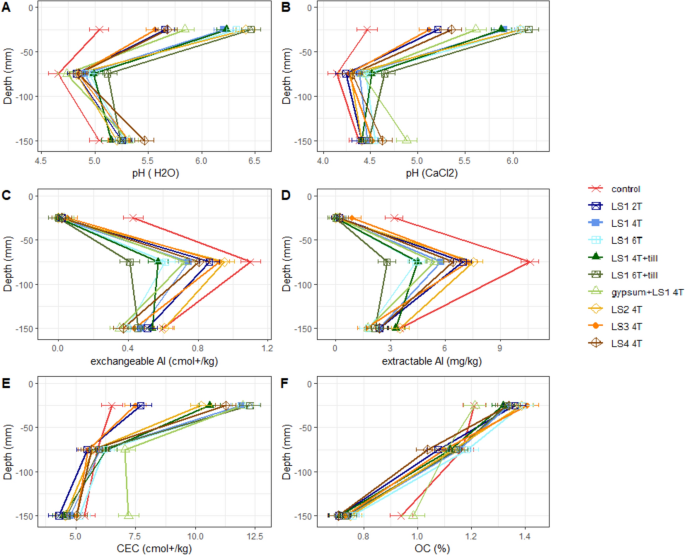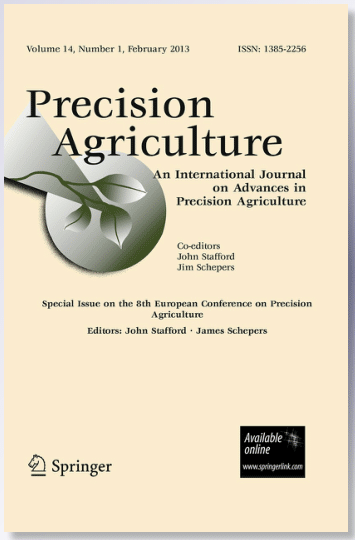Soil acidification is an issue for agriculture that requires effective management, typically in the form of lime (calcium carbonate, CaCO3), application. Mid infrared (MIR) spectroscopy methods offer an alternative to conventional laboratory methods, that may enable cost-effective and improved measurement of soil acidity and responses to liming, including detection of small–scale heterogeneity through the profile. Properties of an acidic soil following lime application were measured using both MIR spectroscopy with Partial Least Squares Regression (MIR-PLSR) and laboratory measurements to (a) compare the ability of each method to detect lime treatment effects on acidic soil, and (b) assess effects of the different treatments on selected soil properties. Soil properties including soil pH (in H2O and CaCl2), Aluminium (Al, exchangeable and extractable), cation exchange capacity (CEC) and organic carbon (OC) were measured at a single field trial receiving lime treatments differing in rate, source and incorporation. Model performance of MIR-PLSR prediction of the soil properties ranged from R2 = 0.582, RMSE = 2.023, RPIQ = 2.921 for Al (extractable) to R2 = 0.881, RMSE = 0.192, RPIQ = 5.729 for OC. MIR-PLSR predictions for pH (in H2O and CaCl2) were R2 = 0.739, RMSE = 0.287, RPIQ = 2.230 and R2 = 0.788, RMSE = 0.311, RPIQ = 1.897 respectively, and could detect a similar treatment effect compared to laboratory measurements. Treatment effects were not detected for MIR-PLSR-predicted values of CEC and both exchangeable and extractable Al. Findings support MIR-PLSR as a method of measuring soil pH to monitor effects of liming treatments on acidic soil to help inform precision agricultural management strategies, but suggests that some nuance and important information about treatment effects of lime on CEC and Al may be lost. Improvements to prediction model performance should be made to realise the full potential of this approach.



